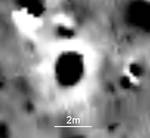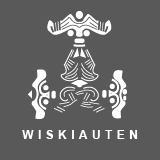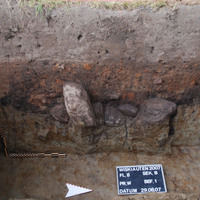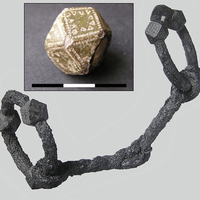Area 8

Similar to area 5 in this excavation a settlement feature of the 7th and 8th cent. A.D. was discovered. But this object so far is an isolated feature with hints for a function as a production pit with unclear purposes. The ground of the pit, which approx. was 60 cm deep, was covered with stones, above them there was a filling consisting out of earth mixed with charcoal as fire residue and a great number of burned clay pieces with imprints of roundly wood (fig. 1). Preliminary they can be interpreted as rests of house walls made of clay or as a construction of the feature itself. Only a few pottery sherds and some bones were identified in the filling, which by other rests with C14-analysis could recently be dated to the 7th and 8th cent. A.D.
The distance to the occupation layers in area 5 is only 350 m, also the former shore of the lake was not far away. The two excavation spots are timely connected to each other and we can suggest a bigger area of settlement activity from this early period which also could contain a younger phase, so far not discovered. But in the vicinity there are some more single C14-dates originating from further anomalies indicating in general some archaeological traces of the 9th and 10th cent. Out of the 10th or 11th cent. A.D. is the stray find of a bead made of bronze, which originally belonged to a ring bit. Only parallels are known from a grave on Gotland so far (fig. 2).
[top]



